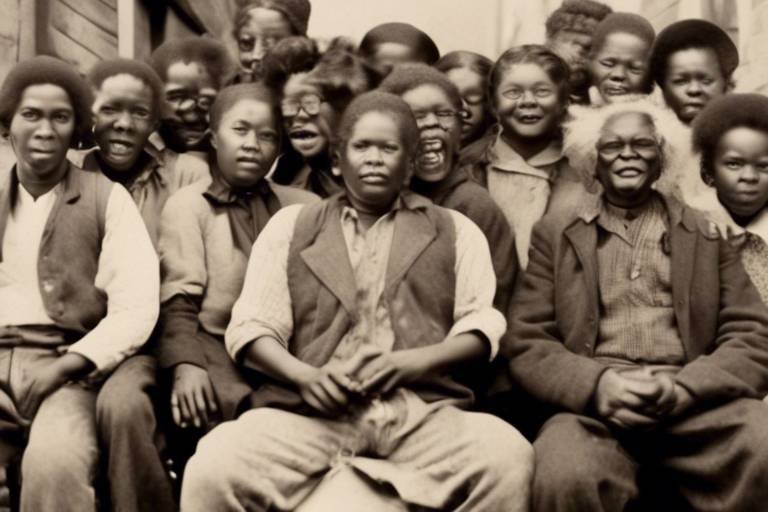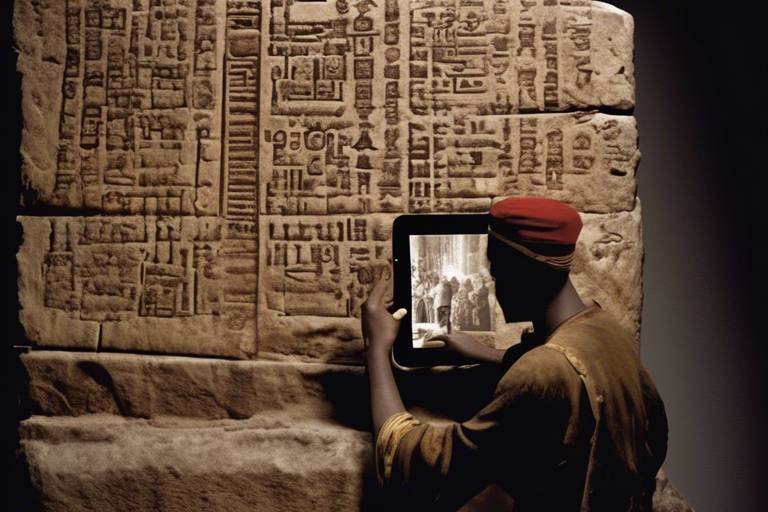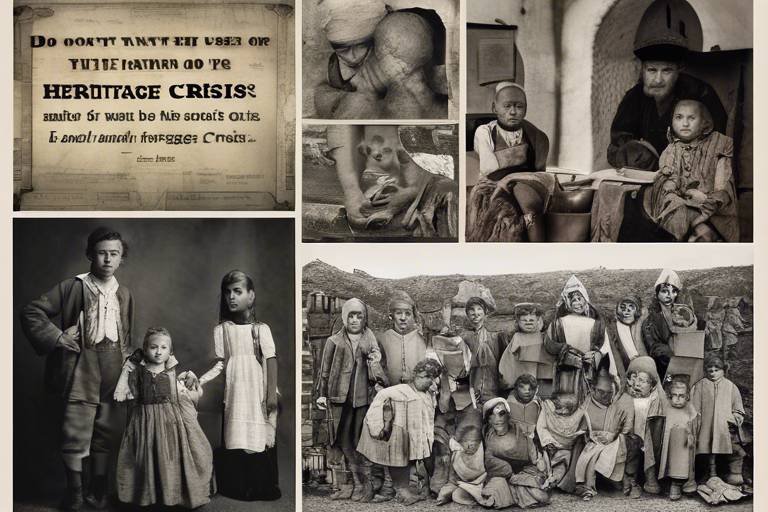Exploring the Relationship Between Heritage and Economic Growth
When exploring the relationship between heritage and economic growth, it becomes evident that the preservation and promotion of cultural heritage play a significant role in fostering economic development. By safeguarding and showcasing cultural heritage assets, communities can unlock a myriad of opportunities that contribute to economic prosperity.
Cultural heritage serves as a cornerstone for economic development through various channels such as tourism, job creation, and community development. Heritage sites and traditions hold immense value, attracting visitors from near and far, thereby stimulating local economies and creating employment opportunities.
Moreover, heritage tourism emerges as a powerful driver of economic prosperity, offering not only financial benefits but also fostering sustainable growth for communities. The influx of tourists to heritage sites not only generates revenue but also sustains local businesses and encourages infrastructural development.
Investing in heritage conservation projects proves to be essential for ensuring long-term economic sustainability and preserving cultural identity. By allocating resources towards the preservation of heritage sites and traditions, communities can safeguard their unique heritage while reaping economic benefits.
Heritage sites play a crucial role in attracting foreign investment, bolstering economic growth, and enhancing the overall competitiveness of a region. The historical significance and cultural richness of heritage sites often serve as magnets for foreign investors, driving economic activity and fostering international partnerships.
Furthermore, heritage preservation initiatives serve as a tool for community revitalization, breathing new life into neighborhoods, attracting businesses, and enhancing the quality of life for residents. By revitalizing heritage buildings and promoting cultural events, communities can create vibrant spaces that attract residents and visitors alike.
While leveraging heritage for economic growth presents numerous opportunities, it also poses challenges that need to be addressed. Balancing economic development with heritage preservation, managing tourism impact on heritage sites, and ensuring community engagement are among the key challenges that require thoughtful strategies.
Policy frameworks play a crucial role in integrating heritage conservation into broader economic development strategies at various levels. By enacting supportive policies, governments can create an enabling environment for heritage preservation, encouraging sustainable development and fostering cultural heritage as an economic asset.
Measuring the economic impact of heritage preservation efforts is essential for evaluating the return on investment in cultural heritage initiatives. By employing methodologies to assess the economic benefits generated by heritage preservation, stakeholders can make informed decisions and allocate resources effectively to maximize the economic potential of heritage assets.
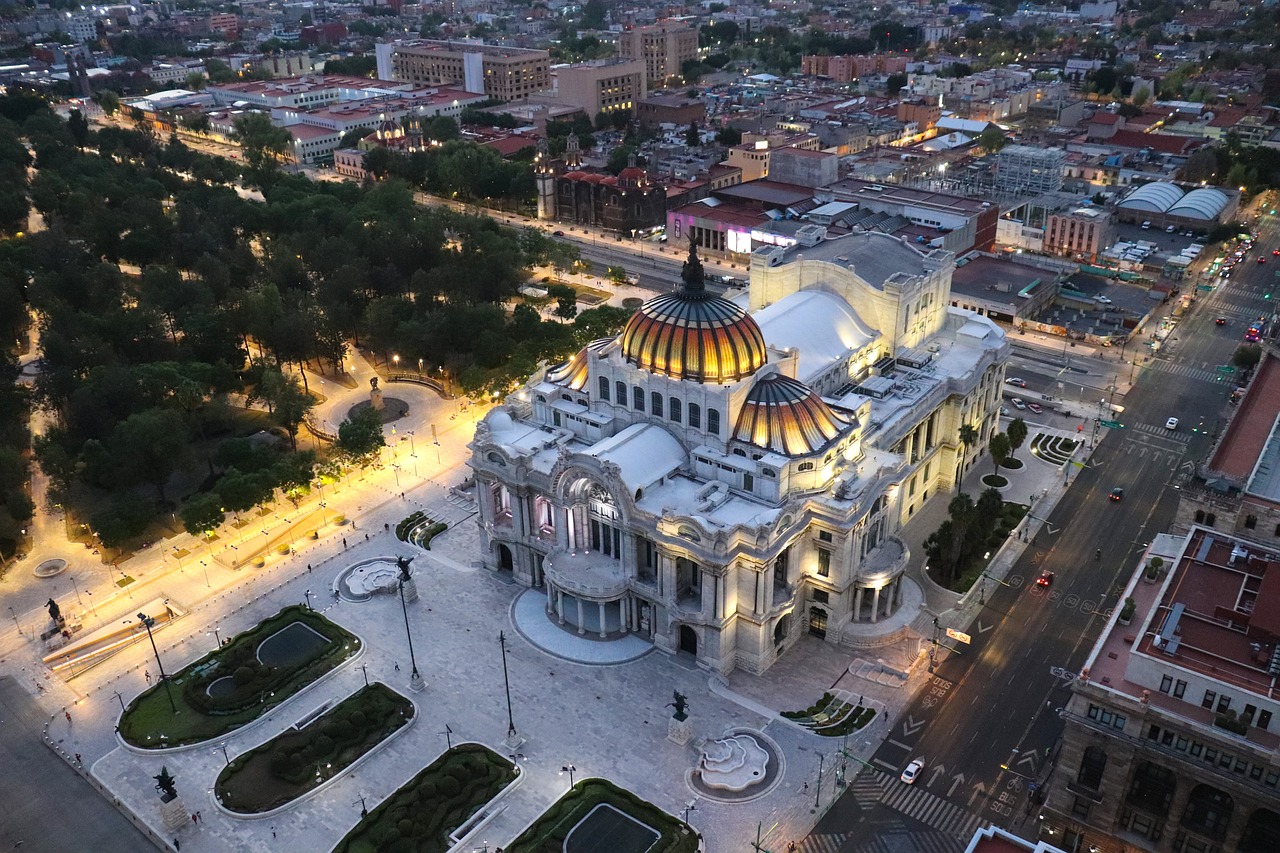
The Impact of Cultural Heritage on Economic Development
Cultural heritage plays a significant role in driving economic development by contributing to various aspects of society. Preserving and promoting cultural heritage not only enriches the cultural fabric of a region but also has a profound impact on its economic growth. Through heritage tourism, job creation, and community development, cultural heritage can become a powerful catalyst for economic prosperity.
Heritage tourism, in particular, has emerged as a key driver of economic growth in many regions. By attracting visitors to heritage sites, communities can experience a surge in revenue, create job opportunities in the tourism sector, and foster sustainable growth that benefits the local economy. The preservation and promotion of cultural heritage assets can transform them into valuable economic resources that support long-term prosperity.
Investing in heritage conservation projects is essential for ensuring the long-term economic sustainability of a region. By safeguarding heritage sites and traditions, communities can not only preserve their cultural identity but also attract foreign investment. Heritage sites have the potential to stimulate economic growth, enhance the competitiveness of a region, and create a unique selling point that sets it apart in the global market.
Furthermore, heritage preservation initiatives can serve as a powerful tool for community revitalization. By revitalizing historic neighborhoods, restoring heritage buildings, and promoting cultural events, communities can attract businesses, residents, and tourists, thereby improving the overall quality of life and fostering a sense of pride and belonging among residents.
While leveraging heritage for economic growth presents numerous opportunities, it also comes with its own set of challenges. Balancing the preservation of heritage assets with the need for economic development, addressing issues of sustainability and authenticity, and ensuring community engagement and participation are key challenges that need to be navigated effectively.
Policy frameworks play a crucial role in integrating heritage conservation into broader economic development strategies. By establishing clear guidelines, incentives, and regulations, policymakers can create an enabling environment that supports the sustainable use of cultural heritage assets for economic purposes. Effective policy frameworks can ensure that heritage preservation efforts align with broader development goals and contribute to the overall well-being of society.
Measuring the economic impact of heritage preservation efforts is essential for evaluating the return on investment in cultural heritage initiatives. By employing methodologies that assess the economic benefits generated by heritage conservation projects, policymakers, and stakeholders can make informed decisions about resource allocation, prioritize preservation efforts, and demonstrate the value of cultural heritage in driving economic development.
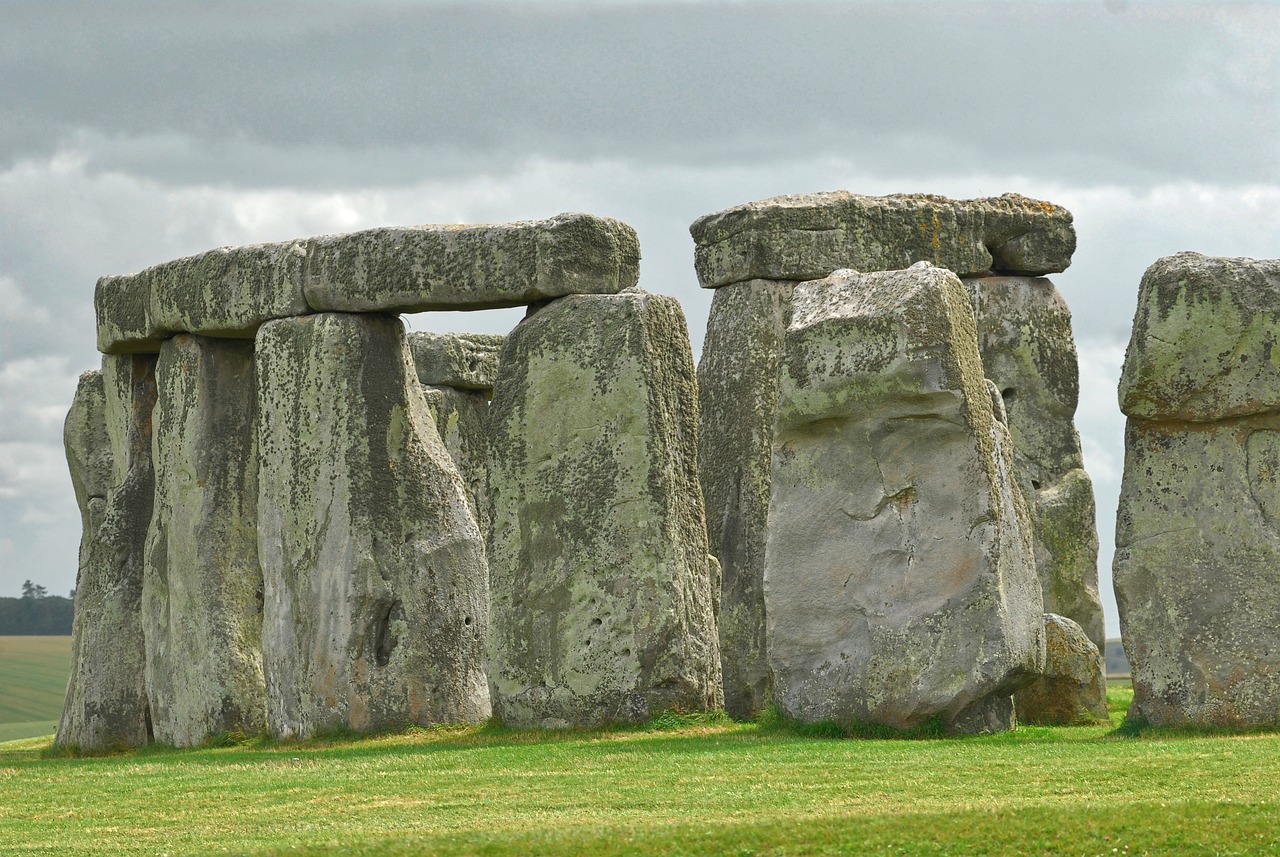
Heritage Tourism as a Driver of Economic Prosperity
Heritage tourism plays a significant role in driving economic prosperity by leveraging the cultural and historical assets of a region to attract visitors and generate revenue. When tourists visit heritage sites, they not only contribute to the local economy through spending on accommodations, dining, and souvenirs but also create job opportunities in the tourism sector. Additionally, heritage tourism can lead to sustainable growth for local economies by promoting the preservation of historical landmarks and traditions.
One of the key benefits of heritage tourism is its ability to showcase the unique identity and heritage of a community, making it a distinctive destination for travelers seeking authentic cultural experiences. By highlighting the historical significance of a region, heritage tourism can differentiate it from other destinations and attract a niche market of tourists interested in exploring the local heritage.
Moreover, heritage tourism can contribute to the overall development of infrastructure and services in a region to cater to the needs of visitors, thereby stimulating economic growth beyond the tourism sector. Investments in heritage conservation and tourism infrastructure not only enhance the visitor experience but also create a ripple effect of economic benefits for the local community.

Investing in Heritage Conservation for Long-Term Economic Sustainability
Investing in heritage conservation is not just about preserving historical sites; it is a strategic move towards ensuring long-term economic sustainability for communities and regions. By allocating resources to protect and promote cultural heritage, stakeholders are making an investment in their future prosperity. This investment goes beyond monetary returns; it encompasses the preservation of identity, history, and traditions that form the foundation of a vibrant society.
Heritage conservation projects have the potential to create a ripple effect in local economies, generating employment opportunities, attracting tourists, and fostering a sense of pride among residents. When historical sites are well-maintained and promoted, they become valuable assets that contribute to the overall economic development of a region. Additionally, heritage conservation can serve as a catalyst for sustainable growth, as it encourages responsible tourism practices and environmental stewardship.
Furthermore, investing in heritage conservation is a proactive approach to safeguarding cultural resources for future generations. By preserving heritage sites and artifacts, communities are not only preserving their past but also laying the groundwork for continued economic viability. These investments ensure that the unique cultural heritage of a region remains intact, serving as a source of inspiration and creativity for years to come.
It is essential for policymakers, businesses, and community leaders to recognize the intrinsic value of heritage conservation in promoting long-term economic sustainability. By integrating heritage preservation into strategic planning and development initiatives, stakeholders can leverage the economic benefits of cultural heritage while safeguarding its integrity for the future.
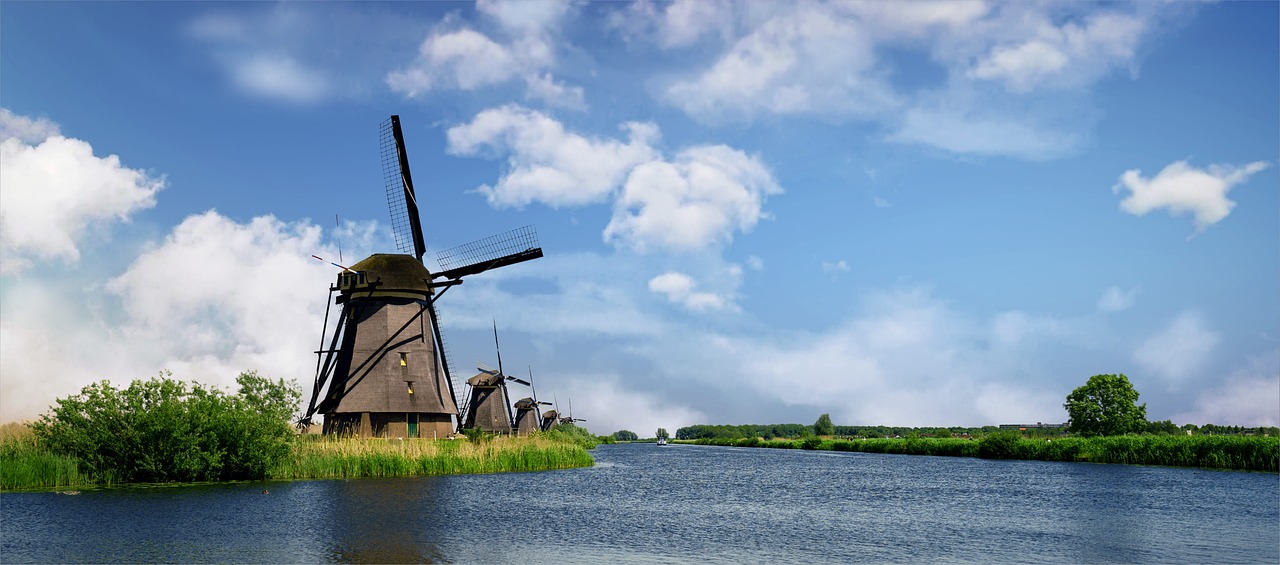
Heritage Sites and their Role in Attracting Foreign Investment
Cultural heritage plays a significant role in driving economic development by attracting tourists, creating job opportunities, and fostering community development. When countries invest in preserving and promoting their cultural heritage, they unlock a treasure trove of economic benefits. Visitors are drawn to historical sites, museums, and cultural events, generating revenue for local businesses and boosting the overall economy.
Heritage tourism stands out as a powerful driver of economic prosperity, offering a myriad of benefits to local economies. By showcasing their unique cultural heritage, communities can attract tourists, leading to increased revenue, job creation, and sustainable growth. This form of tourism not only preserves the past but also paves the way for a prosperous future, creating a win-win situation for both heritage sites and the surrounding communities.
Investing in heritage conservation projects is crucial for ensuring long-term economic sustainability and cultural preservation. By safeguarding historical landmarks, artifacts, and traditions, societies can maintain their identity while also attracting visitors and investors. These investments not only contribute to economic growth but also serve as a testament to a nation's commitment to preserving its heritage for future generations.
Heritage sites play a vital role in attracting foreign investment, acting as magnets for international businesses and investors. The cultural richness and historical significance of these sites create a unique appeal that can stimulate economic growth and enhance the overall competitiveness of a region. Foreign investors are often drawn to locations with rich cultural heritage, seeing them as opportunities for profitable ventures that also contribute to the preservation of history.
Heritage preservation initiatives have the power to revitalize communities by preserving their historical identity and attracting new opportunities for growth. By restoring old buildings, revitalizing public spaces, and promoting cultural events, communities can breathe new life into their surroundings. This not only attracts businesses and residents but also enhances the quality of life for everyone involved, creating a sense of pride and belonging.
Leveraging heritage assets for economic growth presents both challenges and opportunities for communities and policymakers. While heritage preservation can drive economic development, it also requires careful planning, investment, and community engagement. Balancing the need for economic growth with the preservation of cultural heritage poses a unique challenge, but when done thoughtfully, it can lead to sustainable development and long-term prosperity.
Policy frameworks play a crucial role in integrating heritage conservation into broader economic development strategies at various levels of governance. By implementing policies that prioritize the preservation and promotion of cultural heritage, governments can create a conducive environment for sustainable economic growth. These frameworks not only protect heritage assets but also ensure that they continue to contribute to the economic well-being of communities for generations to come.
Measuring the economic impact of heritage preservation efforts is essential for evaluating the return on investment in cultural heritage initiatives. Various methodologies exist to assess the economic benefits derived from heritage conservation, including job creation, revenue generation, and increased tourism. By quantifying these impacts, stakeholders can make informed decisions about future investments in heritage preservation and ensure that these efforts continue to drive economic growth and cultural enrichment.

Heritage Preservation as a Tool for Community Revitalization
Heritage preservation serves as a powerful tool for community revitalization, breathing new life into neighborhoods and towns steeped in history and tradition. By preserving historic buildings, monuments, and cultural landmarks, communities can create a sense of identity and pride that attracts residents and visitors alike. These preserved sites become focal points for community gatherings, events, and celebrations, fostering a sense of belonging and unity among residents.
Moreover, heritage preservation initiatives can stimulate economic activity by attracting tourists, businesses, and investors to the area. Tourists are drawn to communities with well-maintained heritage sites, boosting local businesses such as restaurants, shops, and accommodations. This influx of tourism revenue can create job opportunities and support small businesses, contributing to the overall economic health of the community.
Additionally, heritage preservation can enhance the quality of life for residents by creating aesthetically pleasing and culturally rich environments. Revitalized historic districts often experience lower crime rates, increased property values, and improved infrastructure, making them attractive places to live and work. By preserving heritage sites, communities can retain their unique character and charm, distinguishing themselves from cookie-cutter developments and fostering a sense of place and belonging.
Furthermore, heritage preservation can serve as a catalyst for social cohesion and community engagement. Preserving historic landmarks and traditions can bring residents together to celebrate their shared history and heritage. Community-led preservation efforts can empower residents to take ownership of their cultural legacy, fostering a sense of pride and stewardship that transcends generations.

Challenges and Opportunities in Leveraging Heritage for Economic Growth
When it comes to leveraging heritage for economic growth, there are both challenges and opportunities that need to be carefully considered. One of the main challenges is balancing the preservation of cultural heritage with the demands of modern development. It can be a delicate tightrope walk to ensure that heritage sites are protected and promoted while also allowing for economic growth and infrastructure development.
Another challenge is the need for sustainable tourism practices to prevent over-tourism and environmental degradation at heritage sites. Finding the right balance between attracting visitors for economic benefit and preserving the integrity of the heritage site can be a complex task that requires thoughtful planning and management.
On the flip side, there are numerous opportunities in leveraging heritage for economic growth. Heritage tourism, when managed effectively, can bring significant economic benefits to local communities through increased revenue, job creation, and the development of related industries such as hospitality and handicrafts.
Furthermore, heritage sites can serve as unique selling points for attracting foreign investment and fostering economic partnerships. The historical and cultural significance of these sites can enhance the overall competitiveness of a region and create opportunities for collaboration and growth.
Additionally, leveraging heritage for economic growth can also lead to community empowerment and pride. By investing in heritage preservation and promotion, communities can revitalize their identity, attract new residents and businesses, and create a sense of belonging and cultural continuity.
Overall, while there are challenges to overcome in leveraging heritage for economic growth, the opportunities for sustainable development, cultural preservation, and community prosperity are vast. With strategic planning, stakeholder engagement, and a commitment to balancing economic interests with heritage conservation, the relationship between heritage and economic growth can be a mutually beneficial one.

Policy Frameworks for Integrating Heritage into Economic Development Strategies
Policy frameworks play a crucial role in integrating heritage into economic development strategies at various levels of governance. These frameworks provide a structured approach to leveraging cultural heritage assets for sustainable economic growth and community development. By establishing clear guidelines and objectives, policymakers can ensure that heritage conservation is integrated into broader economic planning processes.
One key aspect of policy frameworks is the establishment of incentives and regulations to promote heritage preservation and investment. Incentives such as tax breaks, grants, and subsidies can encourage private sector involvement in heritage conservation projects. At the same time, regulations help to protect heritage sites from inappropriate development and ensure their long-term sustainability.
Moreover, policy frameworks facilitate collaboration among government agencies, heritage organizations, local communities, and private stakeholders. By fostering partnerships and coordination, these frameworks enable a holistic approach to heritage conservation and economic development. This collaborative effort enhances the effectiveness of initiatives aimed at preserving cultural heritage while fostering economic prosperity.
Additionally, policy frameworks often include mechanisms for monitoring and evaluating the impact of heritage conservation efforts on economic development. By measuring key performance indicators such as visitor numbers, revenue generated, and job creation, policymakers can assess the success of heritage-related initiatives and make informed decisions for future planning.
Furthermore, policy frameworks address the need for capacity building and skill development in the heritage sector. By investing in training programs and educational initiatives, policymakers can ensure that heritage professionals have the necessary expertise to manage and promote cultural heritage assets effectively. This focus on capacity building strengthens the heritage sector and contributes to its long-term sustainability.
In conclusion, policy frameworks are essential tools for integrating heritage into economic development strategies. By providing a systematic approach to heritage conservation, these frameworks support sustainable economic growth, cultural preservation, and community well-being. Through effective policy development and implementation, heritage can be leveraged as a valuable asset for driving economic prosperity and fostering social cohesion.

Measuring the Economic Impact of Heritage Preservation Efforts
Cultural heritage plays a significant role in fostering economic development by attracting tourists, creating employment opportunities, and fostering community growth. When a country invests in preserving and promoting its cultural heritage, it not only safeguards its history but also opens doors to economic prosperity. Visitors are drawn to destinations rich in cultural heritage, leading to increased tourism revenue that directly contributes to the local economy. Additionally, heritage-related activities such as artisan crafts and traditional performances can create jobs and support local businesses, further stimulating economic growth.
Heritage tourism stands out as a key driver of economic prosperity in many regions worldwide. By leveraging historical sites, museums, and cultural events, communities can attract visitors, generate revenue, and establish sustainable growth. The economic benefits of heritage tourism extend beyond monetary gains, as they also create job opportunities, support small businesses, and contribute to the overall well-being of local economies. Furthermore, heritage tourism promotes cultural exchange and understanding, fostering a sense of pride and identity among residents.
Investing in heritage conservation projects is crucial for ensuring long-term economic sustainability and preserving cultural identity. By safeguarding historical sites, monuments, and artifacts, communities can attract tourists, researchers, and investors interested in their unique heritage. Such investments not only protect valuable assets but also contribute to the local economy through increased tourism, educational programs, and cultural events. Heritage conservation serves as a bridge between the past and the future, creating opportunities for economic growth while preserving the essence of a region's history.
Heritage sites hold immense potential for attracting foreign investment, driving economic growth, and enhancing the competitiveness of a region on the global stage. Investors are often drawn to destinations with rich cultural heritage, seeing them as unique opportunities for development and collaboration. By preserving and promoting heritage sites, communities can not only secure foreign investment but also create sustainable economic opportunities for future generations. Heritage sites serve as cultural ambassadors, showcasing a region's history and traditions to the world.
Heritage preservation initiatives play a vital role in revitalizing communities, attracting businesses, and improving the quality of life for residents. By restoring historic buildings, revitalizing public spaces, and promoting cultural events, communities can breathe new life into their surroundings. Heritage preservation not only enhances the aesthetic appeal of a region but also fosters a sense of pride and belonging among residents. Additionally, heritage projects can stimulate economic activity, create job opportunities, and attract visitors, contributing to the overall well-being of the community.
Leveraging heritage assets for economic growth presents both challenges and opportunities for communities seeking sustainable development. While heritage preservation can boost tourism, create jobs, and drive economic growth, it also requires careful planning, investment, and community engagement. Challenges such as funding constraints, lack of expertise, and balancing conservation with development goals must be addressed to fully harness the economic potential of heritage assets. However, by overcoming these challenges, communities can unlock opportunities for growth, innovation, and cultural enrichment.
Policy frameworks play a crucial role in integrating heritage conservation into broader economic development strategies at the local, national, and international levels. Governments, organizations, and communities must collaborate to develop policies that prioritize heritage preservation, promote sustainable tourism, and support economic growth. By aligning heritage conservation efforts with economic development goals, policymakers can create a conducive environment for investment, innovation, and cultural exchange. Policy frameworks serve as guiding principles for leveraging heritage assets responsibly and ensuring their long-term sustainability.
Measuring the economic impact of heritage preservation efforts is essential for evaluating the effectiveness of conservation projects and demonstrating their value to stakeholders. Various methodologies can be employed to assess the economic benefits of heritage preservation, including tourism revenue, job creation, property value appreciation, and cultural heritage-related activities. By quantifying the economic impact of heritage preservation, communities can make informed decisions, attract investment, and advocate for continued support for conservation initiatives. Evaluating the return on investment in cultural heritage projects helps demonstrate their contribution to economic growth, community development, and cultural sustainability.
Frequently Asked Questions
- What is the significance of cultural heritage in economic growth?
Cultural heritage plays a vital role in economic growth by attracting tourists, creating job opportunities, and fostering community development. Preserving and promoting cultural heritage can enhance a region's appeal, leading to increased revenue and sustainable growth.
- How does heritage tourism contribute to economic prosperity?
Heritage tourism drives economic prosperity by generating revenue from visitor spending, creating employment opportunities in the hospitality and tourism sectors, and supporting the growth of local economies. It also helps in preserving historical sites and traditions.
- Why is investing in heritage conservation important for long-term economic sustainability?
Investing in heritage conservation is crucial for long-term economic sustainability as it preserves cultural identity, attracts foreign investment, and contributes to the overall competitiveness of a region. It also ensures the preservation of valuable historical assets for future generations.
- How can heritage preservation initiatives revitalize communities?
Heritage preservation initiatives can revitalize communities by attracting businesses, enhancing the quality of life for residents, and creating a sense of pride and belonging. Revived heritage sites often become focal points for cultural events and economic activities.
- What are the challenges and opportunities in leveraging heritage for economic growth?
The challenges in leveraging heritage for economic growth include balancing conservation with development, securing funding for preservation projects, and addressing potential conflicts between heritage protection and modernization. Opportunities lie in creating unique selling points for tourism, fostering cultural exchange, and promoting sustainable development.
- How can policy frameworks integrate heritage into economic development strategies?
Policy frameworks can integrate heritage into economic development strategies by providing incentives for heritage preservation, establishing regulations for sustainable development, and promoting public-private partnerships in heritage conservation projects. Effective policies can ensure the harmonious coexistence of heritage preservation and economic progress.
- What are the methodologies for measuring the economic impact of heritage preservation efforts?
Methodologies for measuring the economic impact of heritage preservation efforts include conducting visitor surveys, analyzing tourism revenue data, assessing job creation in heritage-related industries, and evaluating the overall return on investment in cultural heritage initiatives. These measurements help in quantifying the economic benefits of heritage preservation and guiding future conservation efforts.


